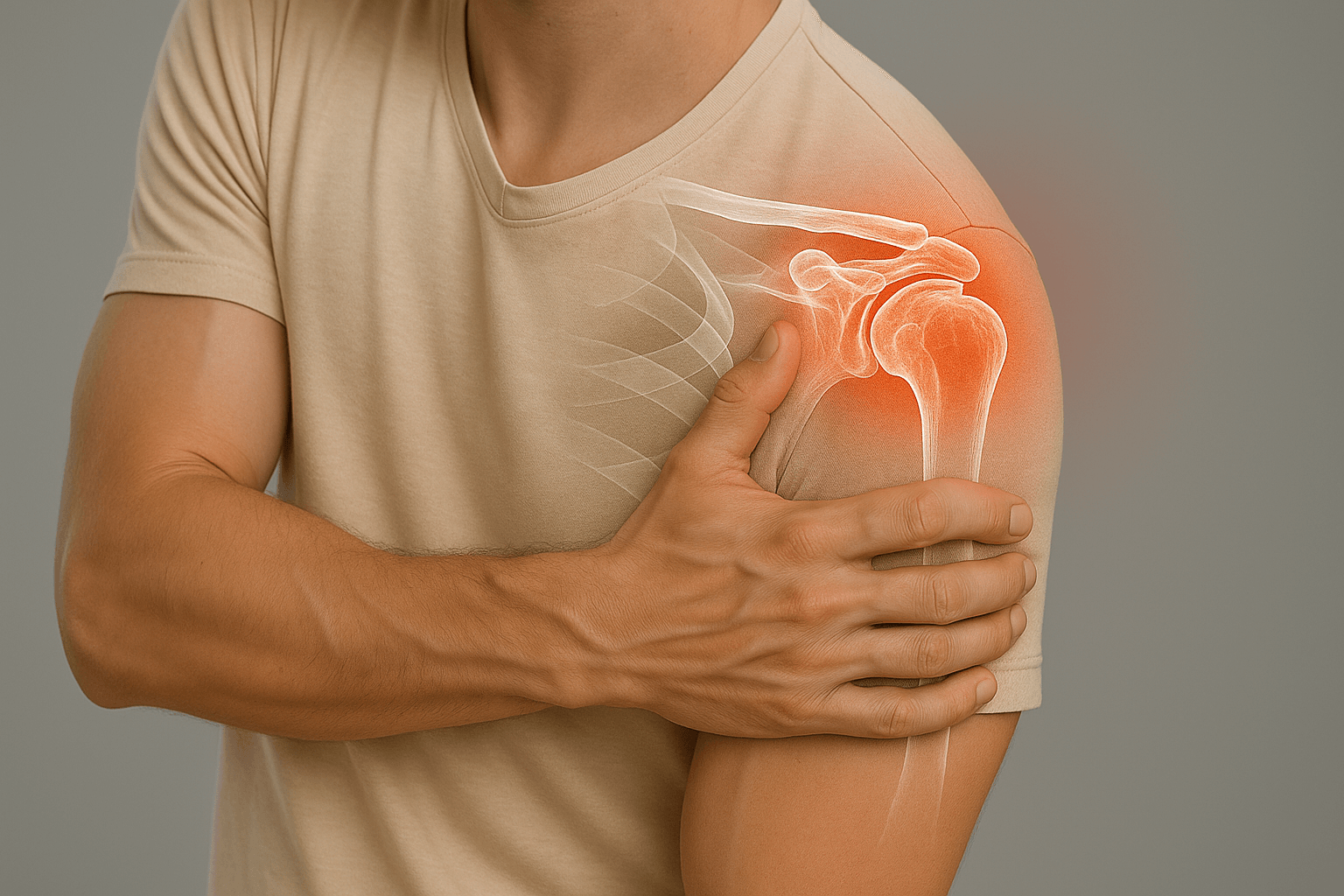Shoulder Osteoarthritis (Omarthrosis)
Shoulder osteoarthritis corresponds to wear of the articular cartilaginous surfaces. This frequent pathology requires specialized management to optimize comfort and function.

What is shoulder osteoarthritis?
Shoulder osteoarthritis, also called omarthrosis, corresponds to progressive wear of the articular cartilaginous surfaces. Under normal conditions, the cartilage of the humeral head slides against that of the glenoid of the scapula, allowing fluid and painless movements.
When the cartilage disappears, the bone rubs directly against the bone, generating pain and functional discomfort. The integrity of the rotator cuff conditions the optimal therapeutic choice.
Main causes
Progressive wear
Repeated stress (manual work with loads above the shoulder, contact sports) favor osteoarthritis.
Trauma
Fractures affecting the articular surfaces (humeral head, glenoid) can lead to osteoarthritis.
Osteonecrosis
Interruption of bone vascularization (dislocations, long-term corticosteroids) leading to bone death.
Rotator cuff rupture
Eccentricity of the humeral head causes abnormal friction and cartilaginous wear.
Diagnosis and evaluation
Clinical examination
- Pain: related to bone-on-bone friction and inflammation, often increased with active movements
- Functional impairment: global or sectorial amplitude reduction according to location
- Night awakenings: possible in case of significant inflammation
Imaging examinations

X-ray
Key examination showing joint space narrowing, deformations, osteophytes

MRI/Arthro-CT
Comprehensive assessment for early stages and surgical planning
Therapeutic options
Post-operative rehabilitation

- Immobilization: Splint 4-6 weeks (day and night except care/exercises)
- Rehabilitation: Started early and progressing according to healing (4-6 months)
- Return to activities: Daily activities around 2 months, sports around 4 months
Specificities: After anatomical prosthesis, subscapularis protection. After reverse prosthesis, deltoid protection in initial phase.
Possible complications
Bleeding/hematomas
Early or late infections
Loosening
Dislocations
Nerve lesions
Complex regional pain syndrome
Practical information
Hospitalization
1 to 3 days
Anesthesia
Regional + general
Immobilization
Elbow-to-body splint 30-45 days
Dressings
Every 5 days (resorbable sutures)
Rehabilitation
4 to 6 months








